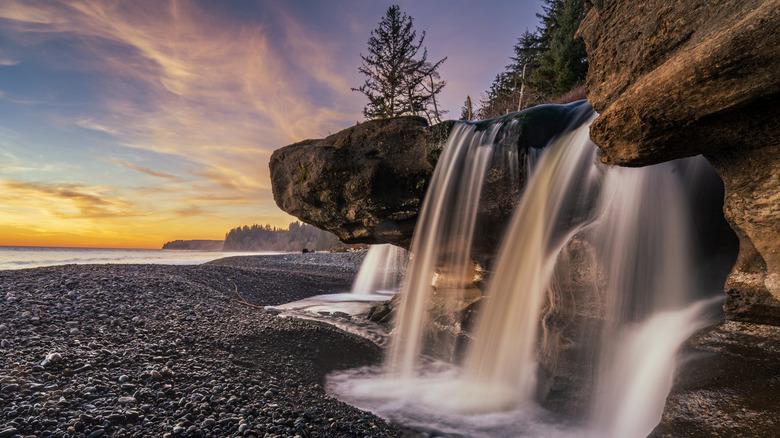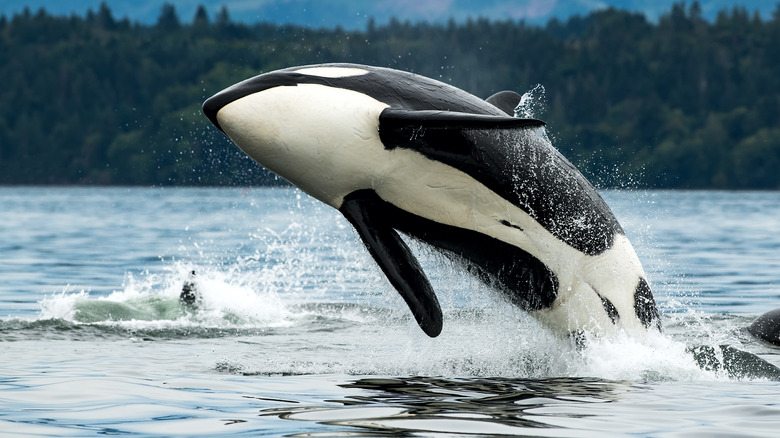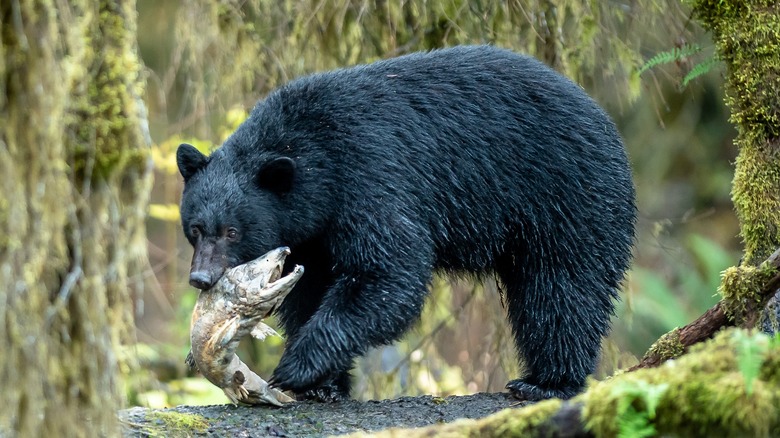This Canadian Island Is A Great Destination For Wildlife Watching Adventures
Vancouver Island lies off the southwestern coast of British Columbia, Canada, in the Pacific Ocean. Almost half the size of Ireland, its rocky coastline goes on for days, encircling an interior of old-growth forests, deep lakes, rugged mountains, and even a few glaciers. With over 100 national, provincial, and regional parks and a temperate climate (at least by Canadian standards), Vancouver Island is a mecca for nature lovers, drawing them from all over the planet.
Because of the range of habitats on Vancouver Island, its wildlife takes many forms. The seas teem with fish, harbour seals, sea otters, California and Stellar sea lions, Pacific white-sided dolphins, orcas, and whales. On land, there are populations of black-tailed deer, elk, cougars, black bears, and even a subspecies of grey wolf endemic to Vancouver Island. The island is also becoming known as a birder's paradise, with bald eagles and many other species of birds that frequent the coastline and forests.
A visit to Vancouver Island is not complete without exposure to some of its magnificent wildlife. While hiking along the coastline and in the rugged interior, visitors can watch salmon spawning in the rivers and glimpse many of the island's birds and terrestrial creatures going about their business. And sea kayaking — which is kind of like hiking on the ocean — is a great way to see marine life. Spotting majestic but elusive animals, such as whales and black bears, usually involves more sleuthing and may require some local guidance.
Marine wildlife on Vancouver Island
The ocean around Vancouver Island is home to many marine mammals, the most abundant being harbour seals, which were nicknamed "ocean puppies" by the Oregon Zoo for their dog-like faces and cute antics in the water. On the opposite end of the spectrum are fierce orcas that are also prevalent around the island. Referred to as killer whales because of their powerful predatory nature, they are actually the largest members of the dolphin family. With 80 resident orcas living near the southern coast of Vancouver Island, and another 260 near the north coast, the animals are frequently spotted on whale-watching trips departing from both the south and north sides of the island.
Several species of whales also frequent the waters around the island, depending on the season. For the thrill of watching enormous humpback whales breach and spout, plan your visit to the island during the summer and early fall during their annual feeding and breeding season. In addition, over 20,000 Pacific gray whales can be observed near the island from late February through April as they head north to their summer feeding grounds. During their migration — which is the longest of any mammal — gray whales travel in small groups and can be quite affectionate with one another. Minke whales are smaller, usually solitary, and more difficult to spot. But lucky whale watchers sometimes see them around the island between May and October.
No lions and tigers but plenty of bears
Running into a bear in the wild is an unforgettable — and potentially terrifying — experience. But it just might happen to you on Vancouver Island, which is home to about 7,000 black bears. The island's black bear density is one of the highest in the world. If you do encounter a black bear while trekking around the island, watch from a safe and respectful distance and walk away slowly if you need to vacate the area.
A less stressful way to see black bears is on a guided tour that takes you to some of their common foraging areas. Pacific Rim National Park is prime territory for black bears . But tours are available in many locations across the island, including Tofino and Ucluelet on the western side and Telegraph Cove and Port McNeill in the east. On the northwest coast, tours departing from Campbell River — widely known as the "salmon capital of the world" — offer front-row seats to the spectacle of bears feasting on salmon during their annual run up the river. Some boat tours departing from Campbell River venture into fjords around mainland BC. In these areas, you also have the opportunity to view grizzlies, black bears' larger and more aggressive cousins, along with many other wildlife species. Wildlife tours require silence and patience while waiting for the animals. So by all means, bring your water bottle and binoculars, but it's best to leave children and chihuahuas safely at home.


